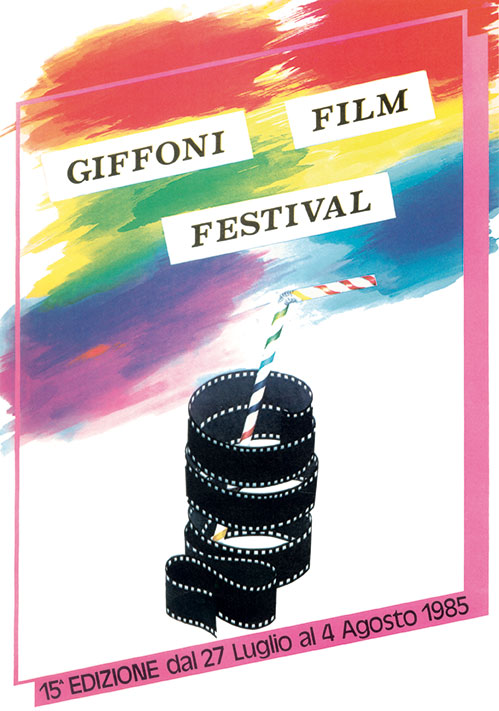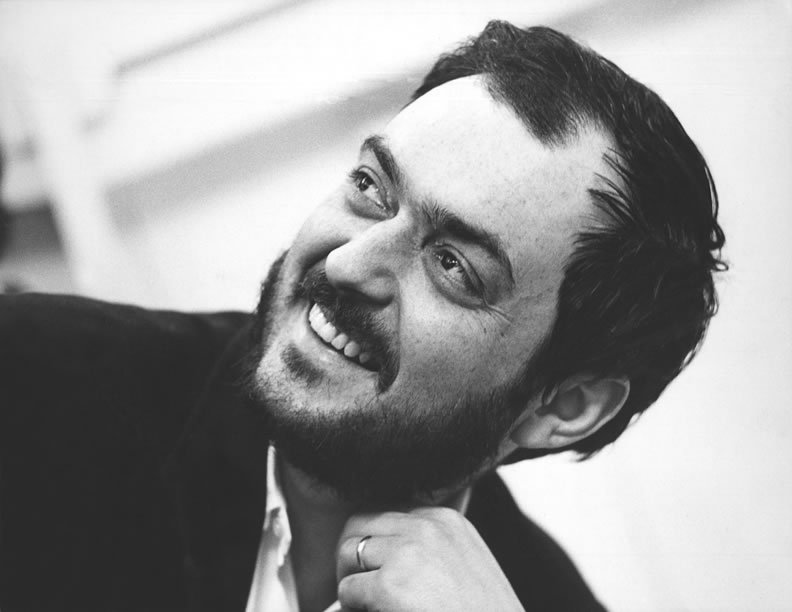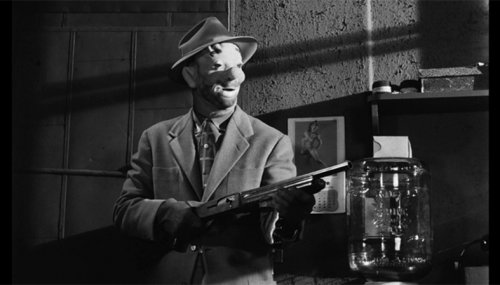Synopsis
Johnny Clay (Sterling Hayden) is a veteran criminal planning one last heist before settling down and marrying Fay (Coleen Gray). He plans to steal $2 million from the money-counting room of a racetrack during a featured race. He assembles a team consisting of a corrupt cop (Ted de Corsia), a betting window teller (Elisha Cook Jr.) to gain access to the backroom, a sharpshooter (Timothy Carey) to shoot the favorite horse during the race to distract the crowd, a wrestler (Kola Kwariani) to provide another distraction by provoking a fight at the track bar, and a track bartender (Joe Sawyer).
George Peatty, the teller, tells his wife Sherry (Marie Windsor) about the impending robbery. Sherry is bitter at George for not delivering on the promises of wealth he once made her, so George hopes telling her about the robbery will placate and impress her. Sherry does not believe him at first but, after learning that the robbery is real, enlists her lover Val Cannon (Vince Edwards) to steal the money from George and his associates.
The heist is successful, although the sharpshooter is shot and killed by a security guard. The conspirators gather at the apartment where they are to meet Johnny and divide the money. Before Johnny arrives, Val appears and holds them up. A shootout ensues and a badly wounded George emerges as the only man standing. He goes home and shoots Sherry before collapsing.
Johnny, on his way to the apartment, sees George staggering in the street and knows that something is wrong. He buys the biggest suitcase he can find to put the money in (and struggles to lock it properly). At the airport Johnny and Fay aren't allowed to take the suitcase along as hand luggage because of its size, and instead must check it in as regular luggage. Johnny reluctantly complies. While waiting to board their plane they watch as the suitcase falls off a cart onto the runway, breaks open and the loose banknotes are swept away by the backdraft from the plane's propellers.
Fay and Johnny leave the airport but are unable to hail a cab before officers are alerted to them. Fay urges Johnny to flee but he refuses, calmly accepting the futility of trying to escape, and utters the final line, "What's the difference?". The film ends with two officers approaching to arrest him.

Sections & Films
THE KILLING
| Original Title | The Killing |
| Italian Title | Rapina a mano armata |
| Category | Out of competition |
| Section | "Nocciola d'Oro '85 Award" to Stanley Kubrick |
| Tipology | Feature Film |
| Duration | 85' |
| Production Year | 1956 |
| Nationality | USA |
| Directed by | Stanley Kubrick |
| Screenplay | Stanley Kubrick |
| Main cast | Sterling Hayden, Coleen Gray, Vince Edwards |
 STANLEY KUBRICK
STANLEY KUBRICK
Stanley Kubrick (July 26, 1928) is an American film director, screenwriter, and producer. He is frequently cited as one of the greatest and most influential directors in cinematic history. His films, which are mostly adaptations of novels or short stories, cover a wide range of genres, and are noted for their realism, dark humor, unique cinematography, extensive set designs, and evocative use of music.
Kubrick was raised in the Bronx, New York City, and attended William Howard Taft High School from 1941 to 1945. Although he only received average grades, Kubrick displayed a keen interest in literature, photography, and film from a young age, and taught himself all aspects of film production and directing after graduating from high school. After working as a photographer for Look magazine in the late 1940s and early 1950s, he began making short films on a shoestring budget, and made his first major Hollywood film, The Killing, for United Artists in 1956. This was followed by two collaborations with Kirk Douglas, the war picture Paths of Glory (1957) and the historical epic Spartacus (1960). His reputation as a filmmaker in Hollywood grew, and he was approached by Marlon Brando to film what would become One-Eyed Jacks (1961), though Brando eventually decided to direct it himself.
Creative differences arising from his work with Douglas and the film studios, a dislike of Hollywood, and a growing concern about crime in America prompted Kubrick to move to the United Kingdom in 1961, where he spent most of the remainder of his life and career. His home at Childwickbury Manor in Hertfordshire, which he shared with his wife Christiane, became his workplace, where he did his writing, research, editing, and management of production details. This allowed him to have almost complete artistic control over his films, but with the rare advantage of having financial support from major Hollywood studios. His first British productions were two films with Peter Sellers, Lolita (1962) and Dr. Strangelove (1964).
A demanding perfectionist, Kubrick assumed control over most aspects of the filmmaking process, from direction and writing to editing, and took painstaking care with researching his films and staging scenes, working in close coordination with his actors and other collaborators. He often asked for several dozen retakes of the same scene in a movie, which resulted in many conflicts with his casts. Despite the resulting notoriety among actors, many of Kubrick's films broke new ground in cinematography. The scientific realism and innovative special effects of 2001: A Space Odyssey (1968) were without precedent in the history of cinema, and the film earned him his only personal Oscar, for Best Visual Effects. Steven Spielberg has referred to the film as his generation's "big bang", and it is regarded as one of the greatest films ever made. For the 18th-century period film Barry Lyndon (1975), Kubrick obtained lenses developed by Zeiss for NASA, to film scenes under natural candlelight. With The Shining (1980), he became one of the first directors to make use of a Steadicam for stabilized and fluid tracking shots. While many of Kubrick's films were controversial and initially received mixed reviews upon release—particularly A Clockwork Orange (1971), which Kubrick pulled from circulation in the UK following a mass media frenzy—most were nominated for Oscars, Golden Globes, or BAFTA Awards, and underwent critical reevaluations.






